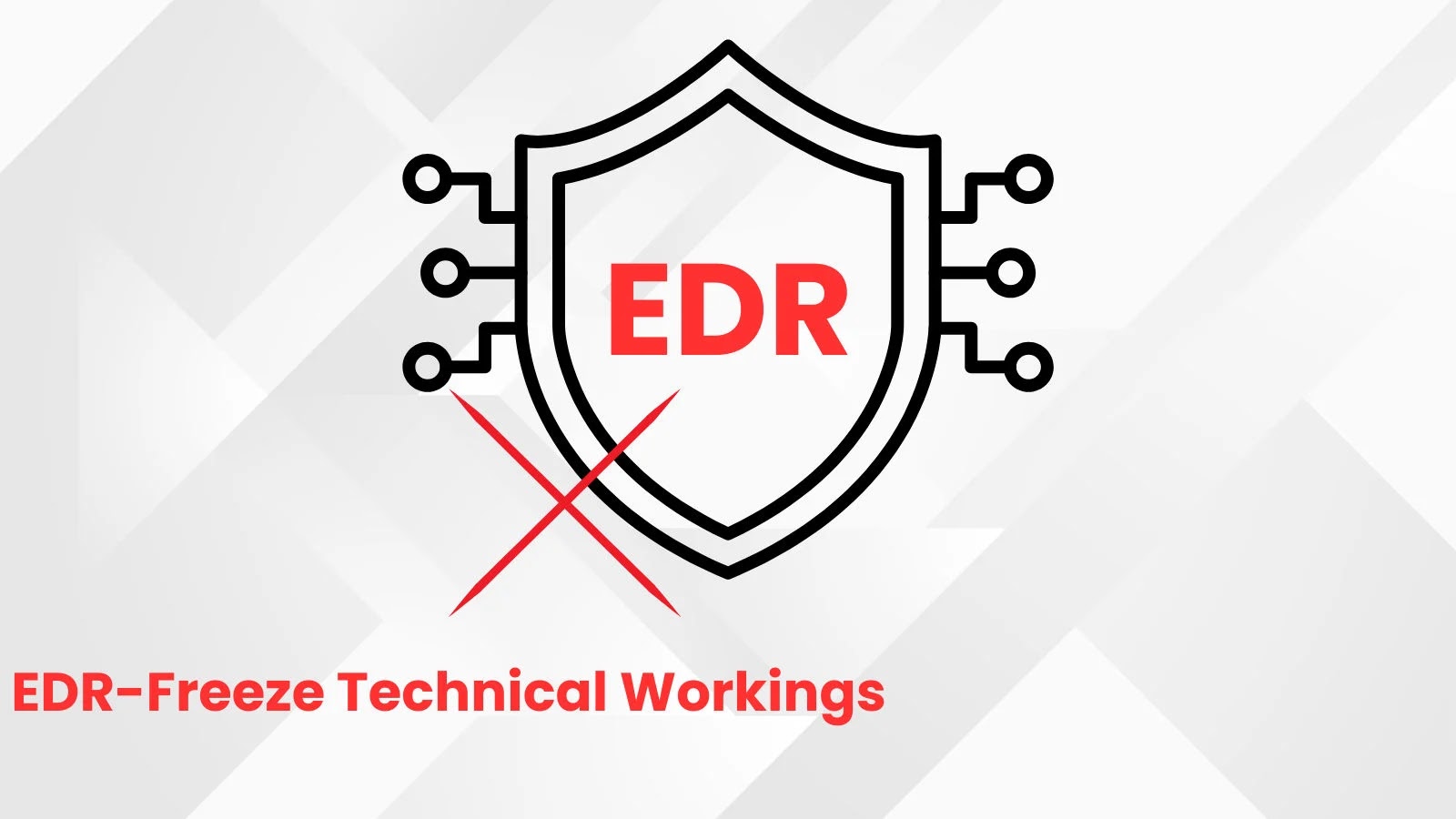
EDR-Freeze Tool Technical Workings Along With Forensic Artifacts Revealed
The relentless cat-and-mouse game between cybersecurity professionals and malicious actors continues to evolve. While Endpoint Detection and Response (EDR) solutions are cornerstones of modern defense strategies, new evasion techniques constantly emerge. A recent analysis by researcher Itamar Hällström has unveiled “EDR-Freeze,” a proof-of-concept (PoC) tool that can temporarily disable security software, providing attackers with a dangerous window of opportunity. Understanding its technical underpinnings and the forensic artifacts it leaves behind is paramount for robust cybersecurity.
What is EDR-Freeze? Understanding the Concept
EDR-Freeze is not a new exploit targeting a specific vulnerability in EDR software. Instead, it leverages legitimate Windows operating system components to manipulate EDR and antivirus (AV) processes. By placing these critical security tools into a temporary, reversible “coma,” attackers can operate unimpeded, execute malicious payloads, and exfiltrate data without triggering alerts. This technique highlights a critical gap: even sophisticated EDR solutions can be rendered ineffective if their underlying processes can be suspended or stalled.
Technical Mechanics: Abusing Legitimate Windows Components
The power of EDR-Freeze lies in its abuse of Windows’ own process management and inter-process communication mechanisms. While the full technical details involve a nuanced understanding of kernel objects and thread states, the core principle is to induce a suspension or indefinite wait state for the EDR/AV processes. This isn’t a crash or termination; rather, the process remains active but becomes unresponsive to its own internal monitoring mechanisms or external system events. This “stalling” effect is often achieved by manipulating synchronization objects or creating scenarios where the process enters a deadlock-like state, awaiting resources that will never become available or events that will never fire. The reversibility aspect is particularly concerning, as the attacker can restore the EDR’s functionality once their objectives are met, further complicating detection.
Revealing the Forensic Artifacts of EDR-Freeze
While EDR-Freeze aims to operate stealthily, like any malicious activity, it leaves a trail. Identifying these forensic artifacts is crucial for incident responders.
- Process State Changes: Analysis of process-related logs and memory dumps (RAM analysis) can reveal unusual process suspension times or extended periods of inactivity for EDR/AV processes. Tools capable of tracking thread states and wait chains can detect if a security process entered a prolonged I/O wait or object wait state that deviates from its typical behavior.
- System and Application Logs: Although EDR-Freeze aims to bypass direct logging by the EDR itself, the Windows Event Log may still capture anomalies. Look for events related to security software attempting to write logs or perform actions and failing, or unusual patterns in process creation/termination preceding and following the EDR “freeze” period. Specifically, examine Event IDs related to process state changes, unexpected service stoppages (even temporary ones), or failed attempts by other system components to interact with the EDR process.
- Registry Modifications: While not directly exploited by EDR-Freeze, attackers often use registry keys to maintain persistence or modify system behavior before or after implementing the freeze. Scrutinize registry hives for suspicious modifications related to service startup types, image path execution options, or new run keys that could indicate pre- or post-freeze activities.
- Memory Forensics: A detailed memory dump of the affected system during an incident can be invaluable. Memory analysis tools can identify injected code, altered EDR memory regions, or suspicious handles opened by the EDR-Freeze tool to manipulate target processes. The presence of specific kernel objects or synchronization primitives in an unexpected state linked to the EDR process can be a strong indicator.
- File System Analysis: The EDR-Freeze tool itself, being a binary, will reside somewhere on the disk (even if temporarily). Although attackers often employ fileless techniques or clean up after themselves, disk forensics can uncover temporary files, execution traces, or remnants of the tool. Look for executables or scripts that correlate with the timeframe of the suspected EDR disablement.
Remediation Actions and Protective Measures
Mitigating the threat posed by techniques like EDR-Freeze requires a multi-layered approach:
- Enhanced Process Monitoring: Implement advanced process monitoring that goes beyond basic heartbeat checks. Monitor for unusual process states, long-duration I/O or object waits, and deviations from normal execution flows for critical security processes.
- Kernel-Level Protection: Leverage security solutions that operate at a lower level within the operating system (e.g., kernel-mode hooks) that are more resilient to user-mode process manipulation.
- Integrity Checks for Security Software: Implement regular integrity checks for EDR/AV binaries and their loaded modules. Any unauthorized modification or unexpected unload of a critical module should trigger an immediate alert.
- Behavioral Analytics: Focus on detecting attacker behavior rather than merely tool signatures. Look for anomalies in user activity, unusual network connections, or attempted lateral movement that might occur during an EDR “freeze” window.
- Zero-Trust Architecture: Adopt a Zero-Trust approach. Assume compromise and verify every interaction. Limit privileges for all users and processes, including administrative accounts, to minimize the impact if an EDR is temporarily disabled.
- Regular Security Audits: Conduct frequent penetration tests and red team exercises to identify weaknesses in EDR configuration and detect potential bypasses.
- Endpoint Hardening: Follow best practices for endpoint hardening, including patching vulnerabilities promptly. While EDR-Freeze isn’t a CVE, ensuring the underlying OS is secure reduces the overall attack surface.
Key Takeaways for Cybersecurity Professionals
The emergence of tools like EDR-Freeze underscores a critical reality: no single security solution is foolproof. Attackers will continue to innovate, leveraging legitimate system functionalities to bypass defenses. For cybersecurity professionals, the key takeaway is the need for proactive and adaptive defense strategies. Relying solely on signature-based detection or even behavioral analytics at the user-mode level may not be sufficient. A deeper understanding of operating system internals, coupled with comprehensive monitoring, memory forensics capabilities, and a commitment to continuous security posture improvement, is essential to counter sophisticated evasion techniques.
Staying informed about research like Itamar Hällström’s analysis of EDR-Freeze is crucial for adapting defenses before these PoC methods become mainstream attack vectors. Our collective vigilance and commitment to robust security practices remain our strongest defense.





